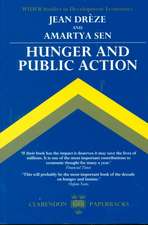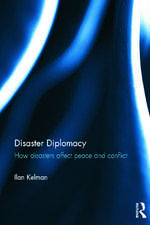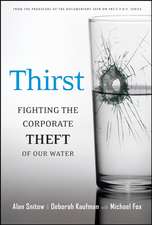Disaster Management: International Lessons in Risk Reduction, Response and Recovery
Editat de Alejandro Lopez-Carresi, Maureen Fordham, Ben Wisner, Ilan Kelman, Jc Gaillarden Limba Engleză Paperback – 22 sep 2014
| Toate formatele și edițiile | Preț | Express |
|---|---|---|
| Paperback (1) | 484.53 lei 43-57 zile | |
| Taylor & Francis – 22 sep 2014 | 484.53 lei 43-57 zile | |
| Hardback (1) | 1013.39 lei 43-57 zile | |
| Taylor & Francis – 29 oct 2013 | 1013.39 lei 43-57 zile |
Preț: 484.53 lei
Nou
Puncte Express: 727
Preț estimativ în valută:
92.71€ • 97.06$ • 76.72£
92.71€ • 97.06$ • 76.72£
Carte tipărită la comandă
Livrare economică 07-21 aprilie
Preluare comenzi: 021 569.72.76
Specificații
ISBN-13: 9780415717441
ISBN-10: 0415717442
Pagini: 352
Ilustrații: 52 black & white illustrations, 18 black & white tables, 34 black & white line drawings
Dimensiuni: 156 x 234 x 19 mm
Greutate: 0.5 kg
Ediția:1
Editura: Taylor & Francis
Colecția Routledge
Locul publicării:Oxford, United Kingdom
ISBN-10: 0415717442
Pagini: 352
Ilustrații: 52 black & white illustrations, 18 black & white tables, 34 black & white line drawings
Dimensiuni: 156 x 234 x 19 mm
Greutate: 0.5 kg
Ediția:1
Editura: Taylor & Francis
Colecția Routledge
Locul publicării:Oxford, United Kingdom
Public țintă
Academic and Professional Practice & DevelopmentCuprins
1. Introduction:who what and why? Part 1: Prevention and Risk Reduction 2. Hazard, Vulnerability, Capacity, Risk and Participation 3. Gender aspects of Disaster Management 4. Community-based Disaster risk reduction and Disaster Management 5. People-centred early warning 6. Disaster Education in schools 7.Many strong voices for Climate Change Education: examples from Belize and Timor-Leste Part 2: Response and Recovery 8. Managing infrastructure, environment and disaster risk 9. emergency and disaster planning 10. common myths and misconceptions in Disaster Management 11. Health aspects of Disaster Management 12. Disaster insurance for the poor 13. Post-disaster recovery planning: Introductory notes on its challenges and potentials Part 3: Regional Perspectives 14. Experiences from Sub-Saharan Africa 15. Disaster Risk Management in Latin America and the Caribbean: Four decades of evolution and change, 1970 to 2010 16. Disaster Risk Management in the Asia-Pacific: emerging trends and directions 17. Integrating people’s capacities in Disaster Risk Reduction through participatory mapping, 18. A knowledge integration tool for Disaster Risk Reduction including Climate Change 19. Conclusion: Addressing all vulnerabilities
Notă biografică
Alejandro López-Carresi is founder and director of CEDEM Centre for Disaster and Emergency Management in Madrid, Spain.
Maureen Fordham is Principal Lecturer and Enterprise Fellow at the Department of Geography, Northumbria University, UK.
Ben Wisner, who has worked in development and hazards for 47 years, is a research affiliate at University College London, UK.
Ilan Kelman is a Senior Research Fellow at the Center for International Climate and Environmental Research – Oslo (CICERO) in Norway.
JC Gaillard is an Associate Professor in the School of Environment at the University of Auckland, New Zealand.
Maureen Fordham is Principal Lecturer and Enterprise Fellow at the Department of Geography, Northumbria University, UK.
Ben Wisner, who has worked in development and hazards for 47 years, is a research affiliate at University College London, UK.
Ilan Kelman is a Senior Research Fellow at the Center for International Climate and Environmental Research – Oslo (CICERO) in Norway.
JC Gaillard is an Associate Professor in the School of Environment at the University of Auckland, New Zealand.
Recenzii
"The book is written for communities and social practitioners to understand the whole process of disaster management. It is reassuring to learn that laws to combat disasters are introduced in almost all countries and are backed up by national action plans and capacity building."
Trupti Patel, Institution of Civil Engineers
Trupti Patel, Institution of Civil Engineers
Descriere
There is a perennial gap between theory and practice, between academia and active professionals in the field. In disaster management this gap means that valuable lessons are not learned and people die or suffer as a result. This book opens a dialogue between theory and practice.














